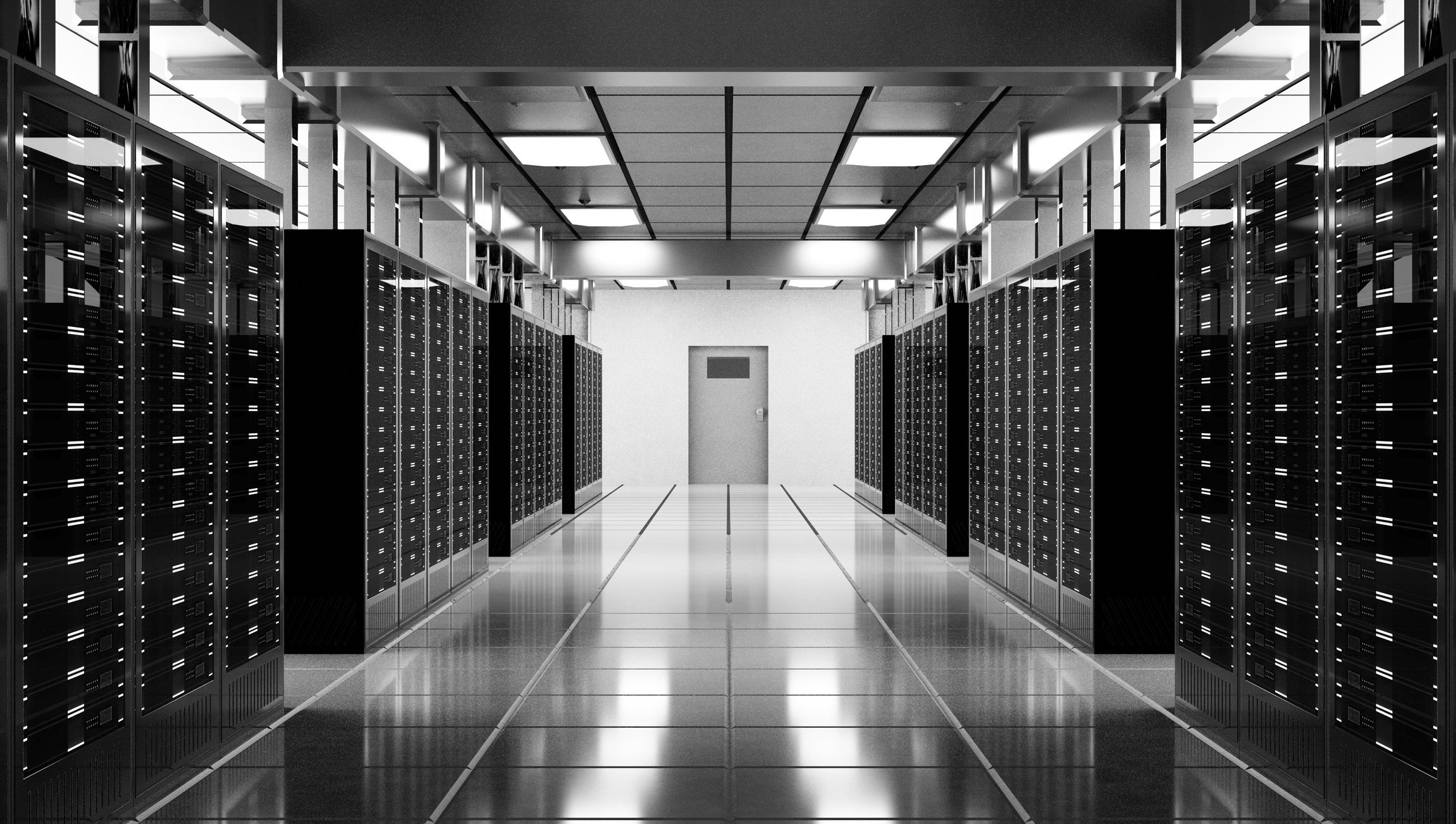
Diverse Demand in the DMV
Different sectors have unique applications for hydrogen based on technology maturity, incentives, and the existing decarbonization efforts within that industry.
The DMV can accelerate the decarbonization of the largest energy-consuming sectors in the region by pursuing hydrogen.
The DMV region can take a leading role as a clean hydrogen hub for its diverse set of demand sectors, including long-haul trucking and logistics, heavy and medium-duty fleets and equipment, aviation and airports, maritime shipping and ports, industrial processing, and secure and reliable stationary power. Developing a viable hydrogen economy in the region requires targeted development focused on the largest energy-consuming sectors that are not well suited for electrification.
Click the icon to explore the section or continue scrolling, below.

Commercial Ground Mobility
Medium- and heavy-duty trucks account for 7% of United States carbon emissions.²⁵ The National Renewable Energy Lab (NREL) reports that while medium- and heavy-duty trucks account for 4% of the vehicle population, they account for 26% of the national fuel use. Given their outsized impact, this segment of the transportation sector is critical to transition from mostly diesel to zero-emissions platforms. In addition to reducing GHG emissions, adoption of fuel cell electric vehicles (FCEV) can reduce diesel soot which disproportionately affects the DMV region.²⁶
The District, MD, and VA are all signatories to the Multi-State Medium- and Heavy-Duty Zero Emission Vehicle Memorandum of Understanding, which sets a foundation for collaboration across states to foster a self-sustaining market for zero-emission medium- and heavy-duty vehicles. Signatories agree to make at least 30% of all new medium and heavy-duty vehicle sales zero-emission vehicles by 2030 with the target of 100% sales by no later than 2050. The memorandum recognizes that this sector has disproportionate impacts on disadvantaged communities near freight corridors, ports, and distribution centers. Supporting the transition of medium- and heavy-duty vehicles can improve the air quality for these communities while supporting GHG emissions targets. Decarbonization of the transportation sector is also supported by the Federal government, which has a significant physical presence in the DMV and has committed to procuring 100% zero-emission vehicles by 2035²⁷, and several of the major freight shipping companies conducting business in the DMV, which have committed to achieving carbon neutrality or net-zero emissions by 2050.
Medium- and heavy-duty FCEVs are zero-emission vehicles that use a fuel cell to power their onboard electric motors. The fuel cell in the vehicle uses hydrogen and oxygen to generate energy and emits only water vapor and warm air. When powered by zero or low carbon intensity hydrogen, FCEVs can significantly reduce greenhouse gas and criteria pollutants emitted compared to traditional gasoline or diesel fuel vehicles.
Hydrogen fuel cell medium- and heavy-duty vehicles have operational advantages over electric vehicles in duty cycles where tractor weight is critical to maximizing payload, long distances (>500 miles) are required, or winter conditions impact operations.²⁸ Hydrogen fuel cells provide ten times the amount of energy density compared to lithiumion battery technology without significant weight increase, which provides more efficiency and no added payload limitations.²⁹ Additionally, fuel cell vehicles can be fully refueled in a few minutes which is advantageous for fleets that require continuous operations.
Converting 10% of new medium-duty vehicles and 15% of new heavy-duty vehicle purchases from conventional gas or diesel to FCEVs creates an estimated annual demand of 100,000 MT in 2030. The approximately 25,000 Medium- and heavy-duty fuel cell trucks in the region will need about 220 fueling stations spread out around the region.
While battery electric vehicles are forecasted to make up the majority of zero-emission vehicle sales, as a network of hydrogen fueling stations and distribution infrastructure is developed for fleets, applications of hydrogen vehicles for personal mobility can also be supported. Hydrogen fuel cell vehicles can complement battery electric vehicles in cases where consumers require faster refueling, longer range, or higher power demand. A conservative 4% adoption rate for new personal vehicle sales by 2030 creates an estimated annual hydrogen demand of 50,000 MT in 2030. While all major vehicle manufacturers are focused on battery electric vehicles, certain major manufacturers continue to develop hydrogen vehicles and technologies to serve parts of the market that aim to be zero-emissions but are not suitable for battery technology.

Building Heat
Commercial and residential buildings produce approximately 13% of greenhouse gas emissions in the United States, largely driven by natural gas consumption.³⁰ Decarbonizing the building heat sector can follow a number of pathways. These include blending hydrogen into the natural gas system, electrification of building heating systems, and direct replacement of natural gas heating systems and appliances with pure hydrogen-fueled systems.
In certain circumstances, electrification of building heating systems is likely to be a cost-effective decarbonization method. However, electrification may not be viable in older buildings with high demand where retrofits could be cost-prohibitive, or in areas subject to grid constraints.
The most immediate and cost-effective pathway will involve natural gas blending. For homes and businesses connected to a natural gas grid, switching to a blend of natural gas and hydrogen offers an opportunity to continue leveraging existing natural gas infrastructure and appliances. Studies have shown that the gas network can safely transport a mixture of up to 20% hydrogen with natural gas. Blending hydrogen into the natural gas distribution system can significantly reduce greenhouse gas emissions if the hydrogen is produced from renewable or nuclear resources.³¹ Blending hydrogen provides a low-cost solution that is compatible with most existing gas infrastructure and equipment and is being piloted by multiple utilities around the world, providing operational and safety experience in handling hydrogen. It can also stimulate the development of new hydrogen production by acting as a backstop for demand, providing long-term contracts for producers.
Lastly, utilizing pure hydrogen as a fuel source enables combustion in hydrogen-ready equipment and appliances without any greenhouse gas emissions. While the use of pure hydrogen in the building heat sector will be in the early stages of experimentation in 2030, it can generate early potential to create a market that supports the security of demand required for producers to generate and transport hydrogen confidently. Within the region, natural gas providers have committed to reducing GHG emissions associated with the use of natural gas by 2030. There is also significant support from the federal government, which requires its owned and leased buildings to reduce emissions by 50% by 2032 and achieve net-zero emissions by 2045; by 2030, all leases greater than 25,000 rentable square feet will be net-zero emissions buildings.³² The DMV has a high density of federally owned and leased buildings that will require decarbonization pathways, including 18 military installations.³³ In the DMV, the federal government manages an inventory of over 880 owned or leased facilities consisting of approximately 95.6 million square feet of space.³⁴ Increased focus on decarbonizing the built environment presents opportunities to transition to hydrogen solutions to reduce emissions and for the federal government to take a leading role in that transition. The region can also consider a switch to pure hydrogen networks for specific applications and where significant demand is identified. Pure hydrogen infrastructure is not limited by natural gas blending thresholds. The region can target specific communities or campuses and install new pipelines or retrofit existing gas distribution systems as an initial step. Repurposing the existing system for pure hydrogen represents about 15% of the cost of new pipelines.³⁵ This approach would offer a pathway to scale hydrogen in building heat use cases beyond that which can be handled by hydrogen blending in the existing natural gas network.
Additional use cases for hydrogen can include combined heat and power (CHP). According to the Department of Energy’s Combined Heat and Power Installation Database, over 150 fuel cell installations in the US are configured for CHP operations.³⁶ Today, most CHP fuel cells use natural gas, which could be easily transitioned to hydrogen in the future, creating additional pathways for hydrogen.
Replacing 1.5% of natural gas end-use with hydrogen, either through blending into the existing natural gas system or establishing pure hydrogen pipelines to fuel residential and commercial building heat and appliances, creates an estimated annual demand of 84,000 MT of hydrogen in 2030.

Aviation
The aviation sector accounts for 3% of United States carbon emissions.³⁷ The Air Transportation Action Group, an association representing all sectors of the air transport industry, committed to reduce net emissions 50% from 2005 levels by 2050.³⁸ This action will require implementing a broad range of solutions, including the adoption of hydrogen aircraft and the use of Sustainable Aviation Fuel (SAF). While SAF has received focus as a near-term decarbonization option, the ability to scale biobased materials is limited by feedstock availability. According to the Department of Energy, “more sources of low-cost feedstock are required as fats, oils, and greases are not currently available in enough volume to meet SAF demand.” Additional pathways are necessary to complement the adoption of SAF to decarbonize air travel fully. Due to the weight of batteries required for electric aircraft, hydrogen-powered aircraft are needed to close the gap in the industry.
Ground support equipment (GSE) accounts for a small portion of potential hydrogen consumption in the DMV region (<1%); however, GSE remains an important use case for airports looking to adopt hydrogen aircraft in the future. Hydrogen GSE has been demonstrated or deployed at multiple airports and is expected to be available in the near term. The adoption of hydrogen GSE allows for the deployment of critical infrastructure, safety, and supply chain protocols that aircraft can leverage thereafter.³⁹ Hydrogen fuel cells can replace existing diesel backup generators and support critical airport operations in the event of power loss. Airport hydrogen infrastructure can also be leveraged to support a broader transportation hub, connecting ground transportation, including intermodal freight, buses, and public transit.
The DMV region contains Dulles International Airport, Ronald Reagan Washington National Airport, Baltimore/Washington International Thurgood Marshall Airport, and Richmond International Airport. The concentration of major airports provides the potential to leverage regional and short-distance flights to develop a hydrogen aviation hub. Partnerships with major and regional airports provide an opportunity to unlock global benefits by innovating in a difficult-to-abate sector where CO₂ emissions from commercial aircraft are expected to triple by 2050.⁴⁰
Retrofitting 8% of the small to medium airplanes used for regional flights to utilize hydrogen fuel cell propulsion systems results in an estimated annual hydrogen demand of 70,000 MT in 2030, which would fuel approximately 40,000 flights.

Maritime
The DMV area is home to the major ports of Baltimore and Virginia. Port-side demonstration projects have been deployed throughout the world, and near-term opportunities include drayage trucks, rubber-tired gantry cranes, and other cargo handling equipment.⁴¹ In addition to material handling equipment, hydrogen can also serve as a clean fuel for ships, harbor vessels, and ferries. These applications are developing and have been identified by industry stakeholders as near-term opportunities for commercialization.⁴²
According to the World Economic Forum, “fuels that don’t depend on carbon inputs, like green hydrogen for example, will have an advantage during the period of rapid scale-up.”⁴³ In addition to hydrogen, other clean alternatives for maritime fuels include methanol, ammonia, and biofuels. Methanol is readily available and has established technology and safety standards; ammonia will require new infrastructure and complete system transition but has the potential to have a lower total cost of operation; biofuels can be leveraged as drop-in fuel today but are limited by their ability to scale.⁴⁴
DMV’s ports are also connected to intermodal freight corridors and have the potential to be connected to hydrogen refueling networks for medium- and heavy-duty vehicles as the hydrogen ecosystem expands in the region.
The Greenprint analysis shows that adoption of hydrogen for ships and port-side applications would create an estimated annual demand of 20,000 MT of hydrogen in 2030.

Power Generation
Power generation makes up 25% of the total emissions in the United States.⁴⁵ Hydrogen applications for centralized power generation include blending hydrogen into natural gas-powered turbines and utilizing pure hydrogen-based turbines. Hydrogen fuel cells provide both baseload and resilient backup power for distributed generation.
“Get off the Dulles Toll Road and you can’t miss them—low-lying gray hulks sprawling across the rolling green landscape. An estimated 70% of the world’s web traffic—streaming video, financial transactions—flows through the colorful insides of these windowless buildings. Welcome to Data Center Alley, the backbone of the online world, right here in DC’s backyard.”
An important regional – and national - power demand center is located in Loudoun County, Virginia, home to the largest concentration of data centers in the world.⁴⁶ These data centers have an estimated load of 2 gigawatts and are expected to continue growing. Several of the largest operators of these data centers have committed to aggressive net-zero goals, which will drive innovative approaches to decarbonize their operations.⁴⁷ The geographic concentration of data centers and their proximity to other potential demand centers provide a unique opportunity to collaborate across sectors to leverage economies of scale and shared infrastructure to maximize the benefits to the region.
Hydrogen fuel cells can replace existing baseload and backup power sources to provide reliability with zero emissions. Data center backup generators are designed to run for up to three days⁴⁸ but are generally only used several hours a year. Due to the low utilization of that equipment hydrogen fuel cell backup generation have the potential to support and leverage cross-sectoral synergies with other use cases. Data center hydrogen storage assets could potentially be made available to other end-uses to support, for example, nearby transportation corridors or airports. The Greenprint analysis estimates that data centers' hydrogen fuel cell backup generation would create an estimated annual hydrogen demand of 10,000 MT in 2030.⁴⁹
Additional use cases at data centers could include using fuel cells for on-site generation in place of electricity from the grid. This approach could offer opportunities for combined heat and power, increased grid independence, and cost savings associated with uninterruptable power backup.⁵⁰
The map below illustrates potential demand centers within the DMV hydrogen ecosystem.

Manassas, Virginia
NEXT SECTION
The Path Forward
Mobilizing the region to embrace a hydrogen economy and focus on removing barriers to hydrogen adoption will result in a cleaner, greener, more equitable DMV.










